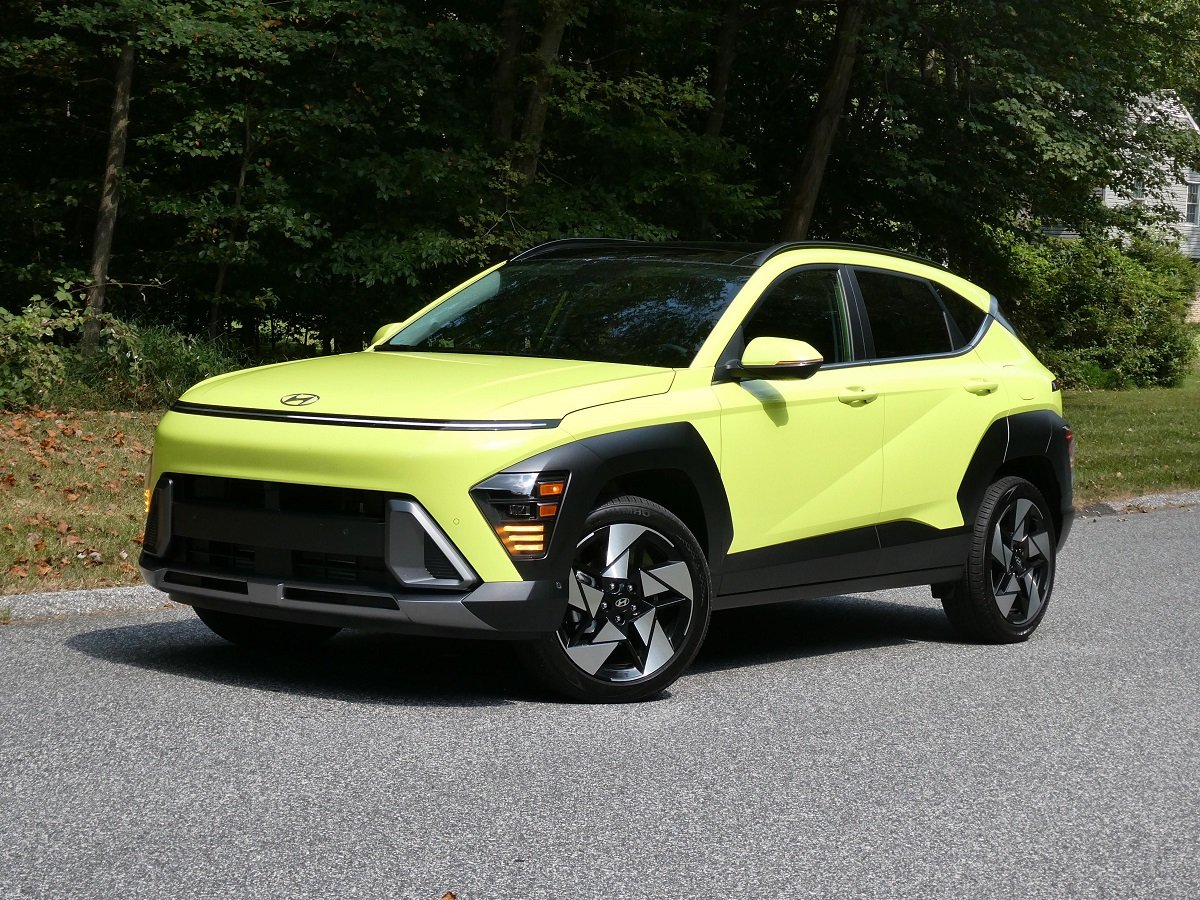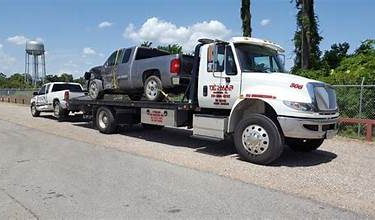Introduction:
In the ever-evolving landscape of commuter cars, the 2024 Hyundai Kona has once again taken center stage with its latest redesign. Renowned for its winning formula of efficiency, practicality, affordability, and a touch of style, the Kona has undergone significant enhancements, making it an even more enticing option for drivers in search of a compact and versatile ride.
A Fresh New Look of 2024 Kona
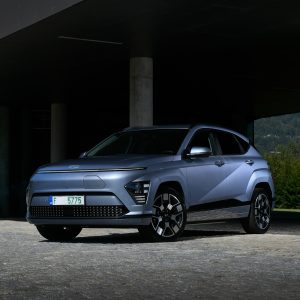
One of the most noticeable aspects of the 2024 Kona is its refreshed exterior design. While maintaining the signature Kona shape, Hyundai has introduced a simplified and more modern look. The front features a razor-thin running light that spans the width of the car, replacing the old grille with active shutters to enhance airflow. The rear mirrors the changes at the front, with a sleek red running light stretching from corner to corner.
For those seeking an extra dose of style, the N Line model elevates the game with body-colored cladding, an eye-catching rear spoiler, and N Line–specific bumpers and wheels. The Kona, known for its distinct appearance, continues to turn heads with its updated aesthetics.
Enhanced Comfort and Space
Step inside the 2024 Hyundai Kona, and the improvements become even more apparent. Hyundai has gone above and beyond to create a more pleasant and functional cabin. Recognizing the diverse needs of customers, the optional heated and ventilated seats, along with the available heated steering wheel, cater to those in regions experiencing varied weather conditions.
Interior of 2024 Kona:
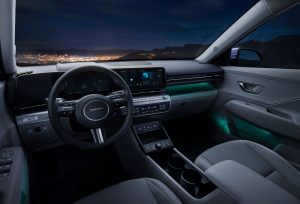
Hyundai has bid farewell to the old model’s gauge cluster and infotainment screens, ushering in a new era with a modern pair of 12.3-inch displays housed within a single-piece bezel. The inclusion of several USB-C connections for both front and rear passengers ensures convenient charging on the go. The shifter has found a new home on the column, freeing up valuable space between the front seats. This unconventional yet practical center console proves to be a boon for storage, and accommodating handbags. And other sizable items. However, it’s worth noting that the storage space doesn’t come with a closing mechanism.
Cabin noise has been a point of improvement in this new generation. Sound-level tests of the 2024 Kona N Line revealed a 33-decibel din at idle, marking a 3-decibel reduction from the outgoing Kona. The interior hush persists even at wide-open throttle, where the 2024 achieved 73 decibels against the previous model’s 74. At 70 mph, the new Kona is 1 decibel quieter, showcasing Hyundai’s commitment to enhancing the overall driving experience.
Still Sufficiently Sprightly
Retaining its commitment to offering choices, Hyundai brings back the previous-generation engines for the 2024 Kona. The SE and SEL trims come equipped with a somewhat modest 147-hp 2.0-liter four-cylinder, paired with a continuously variable automatic transmission. Stepping up to the N Line and Limited trims introduces the more spirited 190-hp turbocharged 1.6-liter four-cylinder. Notably, the turbocharged variant benefits from a smoother eight-speed torque-converter automatic, a departure from the last generation’s seven-speed dual-clutch transmission.
Speed of 2024 Kona
Despite the generational weight gain, the 2024 Kona N Line manages to sprint to 60 mph in 7.5 seconds, a commendable performance considering its category. An intriguing result is the improvement in acceleration from 50 to 70 mph, where the new Kona clocked in at 4.9 seconds compared to the outgoing model’s 5.1 seconds. Braking, however, remains consistent, with the 2024 N Line needing 172 feet to stop from 70 mph, just a couple of feet shorter than its predecessor.
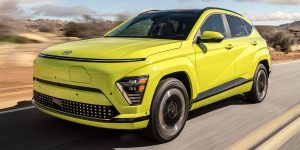
The redesigned Kona hasn’t transformed into a canyon carver, but it retains its capability to deliver an enjoyable driving experience. The chassis exhibits commendable behavior, and the suspension adeptly absorbs road imperfections. The N Line and Limited test vehicles, equipped with standard 19-inch wheels, demonstrate prowess, and the 17- and 18-inch wheels on lesser trims should offer a more balanced approach to bump absorption. Turning the rotary drive-mode dial into Sport injects some extra weight through the steering wheel, although it doesn’t significantly alter the actual feel.
Conclusion:
As with any redesign, the 2024 Hyundai Kona comes with its set of tradeoffs. The longer wheelbase contributes to enhanced practicality, with improved rear legroom and additional cargo capacity. The growth in dimensions does, however, result in a weight penalty, with the 2024 Kona N Line tipping the scales at 163 pounds heavier than its 2021 counterpart.
Despite a slight dip in acceleration and fuel efficiency, the 2024 Kona remains a slam-dunk for most commuters. The newfound convenience tech, including blind-spot and surround-view cameras, adds to the Kona’s allure. The longer wheelbase and commensurate price bump, along with minor hits to acceleration and fuel economy, position the Kona as a compelling choice for those seeking an enjoyable and youthful attitude in the doldrums of city driving.

